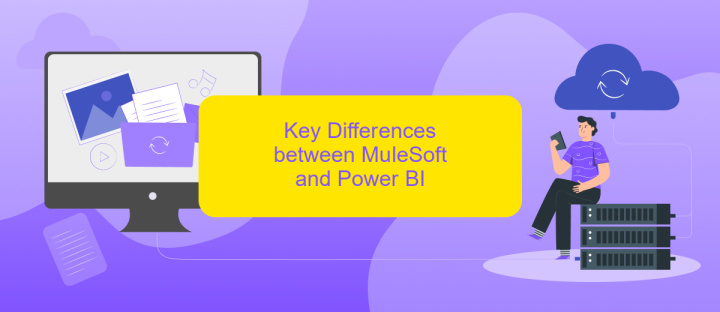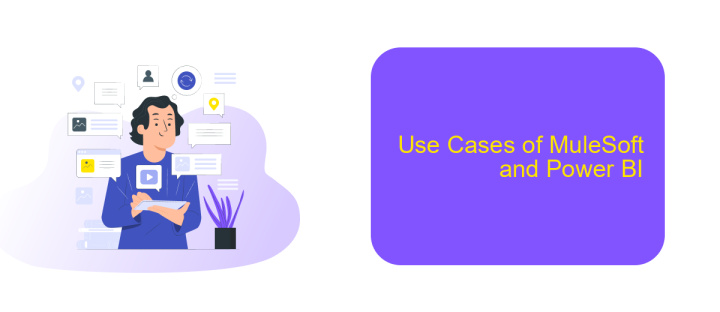MuleSoft Vs Power Bi
In today's data-driven world, integrating and analyzing information efficiently is crucial for business success. MuleSoft and Power BI are two powerful tools that serve distinct yet complementary purposes. MuleSoft specializes in seamless data integration across various platforms, while Power BI excels in transforming raw data into insightful visualizations. This article explores the key features, benefits, and differences between MuleSoft and Power BI.
Introduction
In today's rapidly evolving digital landscape, businesses are constantly seeking efficient ways to manage and analyze their data. MuleSoft and Power BI are two powerful tools that serve distinct yet complementary purposes in this domain. MuleSoft excels in integrating various systems and applications, ensuring seamless data flow, while Power BI focuses on transforming raw data into insightful visualizations and reports.
- MuleSoft: A robust integration platform that connects disparate systems and automates workflows.
- Power BI: A business analytics service by Microsoft that provides interactive visualizations and business intelligence capabilities.
- ApiX-Drive: A versatile service that simplifies the setup of integrations between various applications and services.
Understanding the unique strengths of MuleSoft and Power BI can help organizations make informed decisions about their data management strategies. By leveraging the integration capabilities of MuleSoft and the analytical power of Power BI, businesses can achieve a comprehensive approach to data utilization. Additionally, services like ApiX-Drive can further streamline the integration process, making it easier to connect and automate workflows across different platforms.
Overview of MuleSoft and Power BI

MuleSoft is a leading integration platform that allows businesses to connect various applications, data, and devices seamlessly. It provides a comprehensive suite of tools for designing, building, and managing APIs and integrations. MuleSoft’s Anypoint Platform offers robust capabilities for handling complex integration scenarios, making it a preferred choice for enterprises looking to streamline their IT infrastructure. Additionally, services like ApiX-Drive can further simplify the integration process by providing user-friendly interfaces for connecting different software systems without the need for extensive coding knowledge.
Power BI, on the other hand, is a powerful business analytics tool developed by Microsoft. It enables organizations to visualize data and share insights across their teams. With Power BI, users can create interactive reports and dashboards that provide real-time analytics and data-driven decision-making capabilities. The platform integrates well with various data sources, including cloud services and on-premises databases, making it versatile for different business needs. While MuleSoft focuses on integration and API management, Power BI excels in data visualization and analytics, providing a complementary set of tools for modern businesses.
Key Differences between MuleSoft and Power BI

MuleSoft and Power BI serve different purposes but are often compared due to their roles in data management and analysis. MuleSoft is an integration platform that enables businesses to connect disparate systems, applications, and data sources, while Power BI is a business analytics tool that transforms data into interactive reports and dashboards.
- Functionality: MuleSoft focuses on API-led connectivity and integration, whereas Power BI is designed for data visualization and business intelligence.
- Use Case: MuleSoft is ideal for integrating various systems and automating workflows, while Power BI excels in data analysis and reporting.
- Target Users: MuleSoft is often used by developers and IT professionals, whereas Power BI is geared towards business analysts and decision-makers.
- Integration: While MuleSoft offers robust integration capabilities, tools like ApiX-Drive can simplify integration processes for Power BI by automating data transfer between various platforms.
- Complexity: MuleSoft can be complex due to its extensive customization options, while Power BI is generally more user-friendly with drag-and-drop features.
In summary, MuleSoft and Power BI complement each other rather than compete. MuleSoft handles the backend integration, making it easier for Power BI to access and visualize data from multiple sources.
Use Cases of MuleSoft and Power BI

MuleSoft and Power BI serve distinct but complementary roles within an organization's tech ecosystem. MuleSoft excels in API-led connectivity, enabling seamless integration between disparate systems, applications, and data sources. This capability is essential for businesses looking to streamline their operations and improve data flow across various platforms.
Power BI, on the other hand, is a powerful business analytics tool that transforms data into actionable insights through interactive dashboards and reports. It is particularly useful for organizations aiming to leverage data-driven decision-making processes and gain a competitive edge in their respective markets.
- MuleSoft: API integration, data synchronization, and system interoperability.
- Power BI: Data visualization, business intelligence, and performance tracking.
Both MuleSoft and Power BI can be further enhanced by leveraging services like ApiX-Drive, which simplifies the process of setting up integrations and automating workflows. ApiX-Drive serves as a bridge, ensuring that data seamlessly flows between MuleSoft’s integration capabilities and Power BI’s analytics prowess, thereby maximizing the utility of both platforms.
Conclusion
In conclusion, both MuleSoft and Power BI offer unique strengths tailored to different business needs. MuleSoft excels in providing robust integration solutions, enabling seamless connectivity between diverse systems and applications. This is particularly beneficial for organizations seeking to streamline their operations and improve data flow across various platforms. On the other hand, Power BI stands out as a powerful business analytics tool, offering detailed data visualization and insightful reporting capabilities that empower decision-makers with actionable intelligence.
For businesses looking to integrate these tools or other services effectively, ApiX-Drive can be a valuable asset. ApiX-Drive simplifies the integration process, allowing companies to connect various applications without extensive coding or technical expertise. This ensures that both MuleSoft's integration capabilities and Power BI's analytical strengths can be fully leveraged to drive business success. Ultimately, the choice between MuleSoft and Power BI depends on the specific needs and goals of the organization, but using ApiX-Drive can enhance the functionality and efficiency of either tool.
- Automate the work of an online store or landing
- Empower through integration
- Don't spend money on programmers and integrators
- Save time by automating routine tasks
FAQ
What is the primary purpose of MuleSoft and Power BI?
Can MuleSoft and Power BI be used together?
Is MuleSoft suitable for small businesses?
How does Power BI handle data from multiple sources?
What skills are required to use MuleSoft and Power BI effectively?
Strive to take your business to the next level, achieve your goals faster and more efficiently? Apix-Drive is your reliable assistant for these tasks. An online service and application connector will help you automate key business processes and get rid of the routine. You and your employees will free up time for important core tasks. Try Apix-Drive features for free to see the effectiveness of the online connector for yourself.


